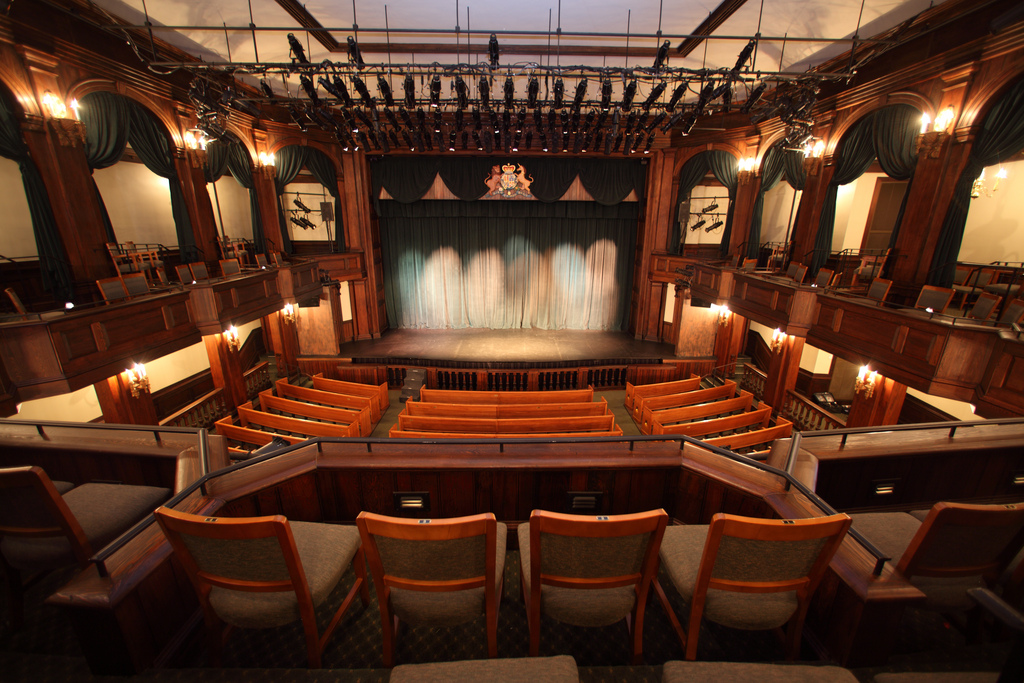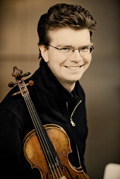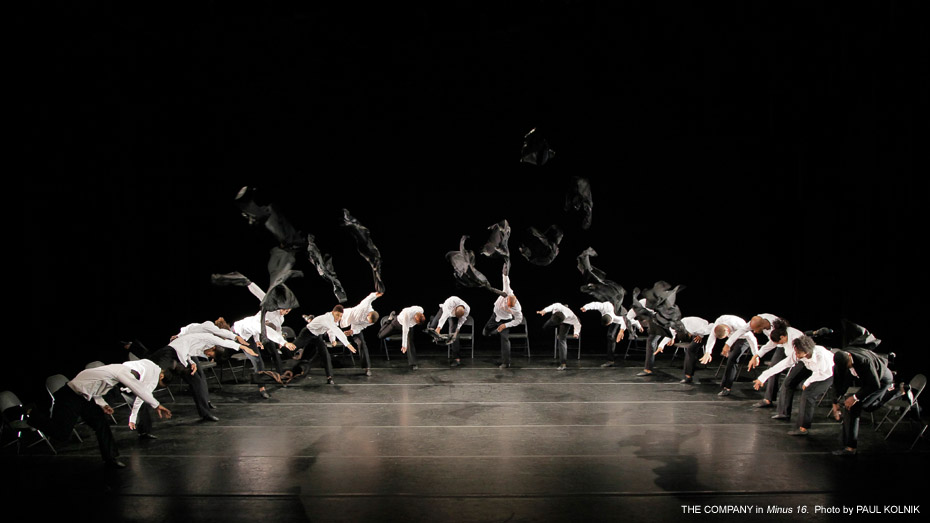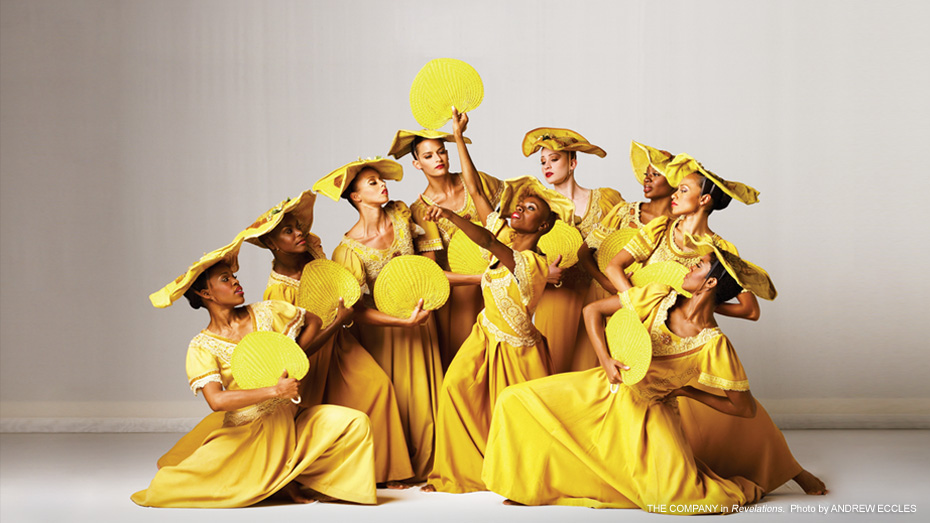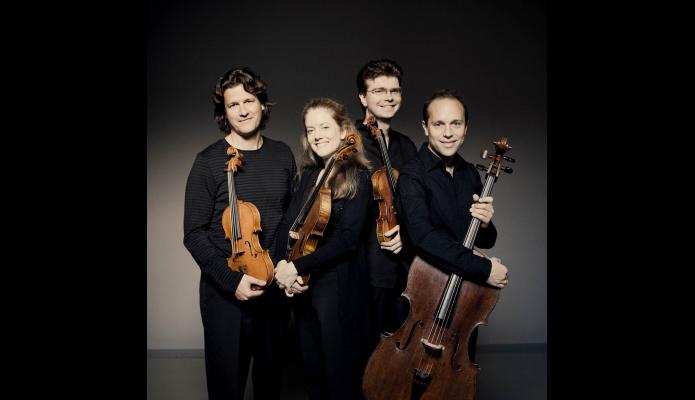 I think everyone was concerned about how the Spoleto Chamber Music Series would fare once its founder the beloved Charles Wadsworth said goodbye. After seeing Geoff Nutall in action at my first chamber concert since Wadsworth’s leaving, I don’t think anyone is the least bit worried any more. (The cool-yet-sad thing? Wadsworth was in the audience and—as we learned Saturday afternoon—he will play his final public performance on the stage in the last of the series’ concerts later this week.) Nutall owned the stage offering clever banter and pertinent information in such a casual, stand-up comedy style that the audience giggled and laughed. And these audiences aren’t always the laughing and giggling types.
I think everyone was concerned about how the Spoleto Chamber Music Series would fare once its founder the beloved Charles Wadsworth said goodbye. After seeing Geoff Nutall in action at my first chamber concert since Wadsworth’s leaving, I don’t think anyone is the least bit worried any more. (The cool-yet-sad thing? Wadsworth was in the audience and—as we learned Saturday afternoon—he will play his final public performance on the stage in the last of the series’ concerts later this week.) Nutall owned the stage offering clever banter and pertinent information in such a casual, stand-up comedy style that the audience giggled and laughed. And these audiences aren’t always the laughing and giggling types.
The Saturday program (Program VI) offered Debussy’s Sonata for Cello and Piano featuring St. Lawrence String Quartet’s (Nutall’s group) cellist Christopher Costanza, followed by Ginastera’s Duo for Flute and Oboe with the glorious Tara Helen O’Connor and James Smith, and finally Beethoven’s String Quartet in E Major, Opus 59, no. 1 performed beautifully by the St. Lawrence String Quartet.
Before the concert, Nutall shared with the audience, via a letter written by Debussy, how much the composer hated being clumped in with the Impressionists of his era—he resented the whole extrapolation of a visual arts genre to music. This piece was written in 1914, just four years before his death of cancer in 1918. Debussy had planned for 6 sonatas but was only able to complete 3 including this sonata for cello.
OK, this is a little intimate here, but to my recollection my mind has never wondered to sex while attending a chamber music concert—until Saturday afternoon. There was something about watching Costanza and his relationship with his cello that was easily evocative of a person in the throes of pleasure. His face was beautifully expressive; his fingers, agile; his expertly calculated bowing with long and efficient strokes, delicious. Oh my.
And the music was nice, too.
Here’s the funny thing. Costanza, though certainly more attractive, looks more than a little like the character of Toby the PR person from the recently ended sit-com series, The Office. Keep this in mind. We’ll come back to it after we address the Duo for Flute and Oboe which was awe-inspiring. Tara Helen O’Connor is a master of the flute—her intonation somehow simultaneously lightly delicate while also being intense. She and her partner for this concert, James Smith—who looks a lot like Seth Meyers from SNL—demonstrated a practically perfect interplay as they called to and answered one another, locking eyes for the final few notes of the duo and ending in an authentic embrace. It was resplendent.
The final number for the concert required that the entire St. Lawrence String Quartet (SLSQ) come to the stage. This musical group is like no other quartet in their commitment to all aspects of musical interpretation—facial, physical, etc. (I’ve had the pleasure of seeing them play many times before; one of the most memorable being in 2003 at the Joyce Theatre in NYC when the quartet accompanied Pilobolus Dance Theatre for the premiere of My Brother’s Keeper, performing Shostakovich’s String Quartet No. 8 Op. 110. The quartet also performed (unaccompanied by choreography) a piece by Jonathan Berger called Eli Eli (In Memory of Daniel Pearl.))
According to Nutall, with this string quartet Beethoven took classical music by the collar and threw it into the Romantic era, writing it in a way that would dare amateurs to try to play it. The complexity and difficulty of the piece was not lost on the audience in the Dock Street Theatre. Nor was the excitement of the accomplishment of such a difficult piece lost on the quartet whose engagement with the music is nothing short of thrilling. As usual, it was all Nutall could do to stay in his seat.
As mentioned previously, Nutall is a bit of a character. Sort of floppy haired at times with a wardrobe that looks like anything except what you would expect a first violinist in a Grammy-nominated, internationally renowned string quartet (the group is in residence at Stanford University) to look. On this particular day he wore a long sleeved shiny shirt, oddly patterned, and looking like something Michael Scott (also from The Office) might wear. When he called his colleagues onto stage it wasn’t difficult to see a family-television resemblance with Scott St. John playing the role of Dwight Shrute, Leslie Robertson playing Angela and, of course, Chris Costanza playing the part of a somewhat amorous Toby.
Even with Wadsworth watching from the audience, the Spoleto Chamber Music Series continues to be a culturally significant hoot—always full of surprises. Highly recommend.


